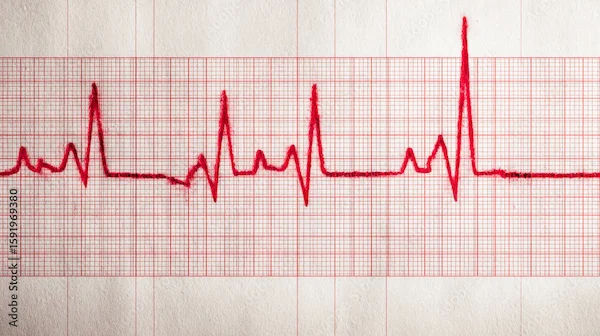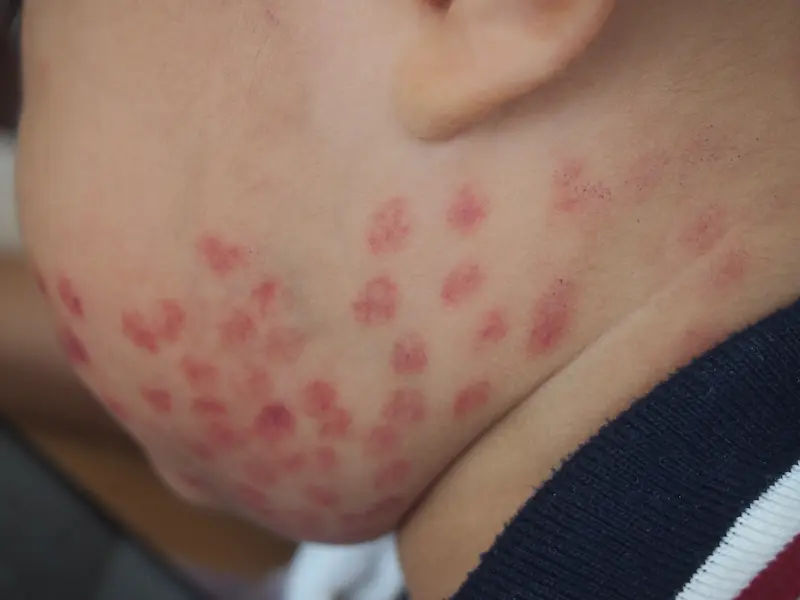Guide to Child Development: Milestones and Support
Explore child development milestones from birth to adolescence with this practical, UK-focused guide. Learn how to support growth in language, movement, and social-emotional skills, and when to seek extra help. Evidence-based advice for parents and caregivers to help every child thrive.


Introduction
Every child develops at their own pace, yet there are common patterns that help parents and caregivers understand what to expect and how to support growth. Child development covers how children build skills in movement, thinking, language, and social-emotional areas—and how daily routines like sleep, nutrition, and play shape this progress.
This guide outlines age-by-age milestones from birth through adolescence, practical strategies you can use every day, and clear advice on when to seek extra support. Drawing on trusted global guidance, it translates the science of brain development into actionable steps and highlights how to create a nurturing home environment. Whether you’re celebrating a baby’s first step, supporting school readiness, or guiding a teen’s independence, this guide offers evidence-based insights and real-world strategies to help your child thrive.
Consult a Top General Practitioner for Personalised Advice
What Is Child Development and Why Does It Matter
Child development describes how children gain skills across five core areas:
- Physical: gross and fine motor skills.
- Cognitive: thinking and problem-solving.
- Language and communication: understanding and expressing ideas.
- Social-emotional: managing emotions, relationships, and behaviour.
- Adaptive/self-help: independence in daily living.
Progress typically follows a predictable sequence but varies widely between children. For example, babies may begin walking anywhere between nine and fifteen months, and both early and later walkers can be perfectly healthy.
A Whole-Child Approach
Development in one area supports others. A toddler stacking blocks (fine motor) is also experimenting with cause and effect (cognitive) and using new words (“up!”, “more”) to describe their play (language). Strong, secure relationships fuel all areas by providing safety and responsive feedback.
- Unique insight: Think of development as a spiral staircase, not a straight line. Children surge ahead, plateau, and sometimes appear to step back before moving forward again. Two minutes of focused, back-and-forth (“serve-and-return”) conversation, repeated often, is more powerful for language and emotional growth than an hour of distracted multitasking.
The Science of the Growing Brain
From birth, a child’s brain forms new connections at a remarkable speed. Experiences—especially warm, back-and-forth interactions—literally shape brain architecture. When you smile and your baby coos, when your toddler points and you label objects, or when your child tells you about their day and you listen, these exchanges strengthen circuits for attention, language, and emotional control.
The Role of Stress and Relationships
Short-lived, manageable challenges (“positive stress”) build resilience. When a child faces stress with supportive adults, the brain learns to recover and adapt. But chronic, severe stress without support (“toxic stress”) can disrupt brain development. Consistent, caring relationships protect children and teach regulation skills.
Sensitive Periods and Plasticity
Certain skills, such as language, are easier to develop during early “sensitive periods.” Talking, reading, and singing from birth provide strong foundations for literacy later on. However, the brain remains adaptable—growth and change are possible at every stage.
- Unique insight: Tiny, daily habits—like narrating simple actions (“Now we wash hands, rub, rub, rinse”)—create thousands of low-effort learning opportunities that add up over time. Consistency usually beats intensity.
Milestones from Birth to Five Years
The first five years bring rapid, visible change. Milestones describe what most children can do by a certain age—they are guides, not tests.
0–12 Months
Babies begin to focus their eyes, smile socially by around two to three months, roll by four to six months, sit by six months, and pull to stand or say “mama” and “dada” by nine to twelve months. They show curiosity by reaching and mouthing objects, respond to their name, and enjoy peekaboo.
1–2 Years
Toddlers typically walk, scribble, use gestures, stack a few blocks, and build a vocabulary of around fifty words by age two. Two-word phrases like “more milk” begin, and simple pretend play develops.
3–5 Years
Preschoolers run, hop, draw shapes, use short sentences, and begin recognising letters and rhymes. By age five, many can tell simple stories, play cooperatively, and follow multi-step instructions—key for school readiness.
When Timelines Differ
If a child shows limited eye contact, doesn’t point to share interest, or hasn’t started using two-word phrases by two years, seek professional guidance early. Early support can make a meaningful difference.
School-Age (5–12 Years): Learning, Friends, and Skills
During the school years, children focus on mastering academic skills, developing executive functions, and strengthening friendships.
Building Executive Function
Working memory, planning, and self-control grow through everyday routines. Parents can support these by setting consistent homework times, using visual schedules, and breaking tasks into steps.
Social Development and Habits
Friendships, empathy, and fairness become central. Extracurricular activities—like sports or music—boost confidence and belonging. Maintain balance with screen use: prioritise schoolwork, physical activity, and family connection before entertainment.
Sleep and Nutrition
Children aged six to twelve need nine to twelve hours of sleep nightly. A calm wind-down routine—no screens an hour before bed, dimmed lights, and quiet reading—supports rest and learning. Balanced meals, breakfast, and hydration all enhance focus and mood.
- Unique insight: Use “habit stacking”—tie new habits to existing ones (e.g., after brushing teeth, lay out tomorrow’s clothes). Predictable routines make daily life smoother and free up energy for creativity and play.
Adolescents (12–18 Years): Puberty, Identity, and Mental Health
Adolescence brings major physical and emotional change. Growth spurts, puberty, and shifting sleep cycles often lead to late nights and tired mornings. Teens need eight to ten hours of sleep each night for optimal focus and mood.
Developing Independence and Judgment
The teenage brain’s reward system matures before its control system, making risk-taking more likely—especially with peers. Encourage “positive risks” like sport, art, or volunteering. Open discussions about consent, social media, and online safety build trust and responsibility.
Supporting Mental Health
Anxiety, low mood, or behavioural changes can appear during these years. Persistent symptoms—lasting more than two weeks—deserve attention. If they affect daily life, seek guidance from a healthcare professional.
- Unique insight: Co-create a “family tech plan” with your teen. Agree on device-free times (e.g., mealtimes, bedrooms) and discuss what to do if something upsetting appears online. Collaborative rules promote digital responsibility and respect.
What Shapes Development: Nutrition, Sleep, Play, and Screens
Nutrition
The World Health Organization recommends exclusive breastfeeding for the first six months, followed by continued breastfeeding alongside varied complementary foods. For older children, encourage balanced meals with fruits, vegetables, whole grains, proteins, and healthy fats. Regular family meals support communication and emotional health.
Sleep
Recommended sleep durations per 24 hours:
- 4–12 months: 12–16 hours (including naps)
- 1–2 years: 11–14 hours
- 3–5 years: 10–13 hours
- 6–12 years: 9–12 hours
- 13–18 years: 8–10 hours
Keep bedtimes consistent, reduce evening screens, and create calming pre-sleep routines.
Play
Unstructured play builds creativity and problem-solving. Even 20 minutes a day of floor play or outdoor time can boost mood and learning. Read, sing, tell stories, and practise emotional skills like turn-taking and sharing.
Screens and Digital Balance
For under-18-month-olds, avoid screen use apart from video calls. For ages two to five, aim for one hour per day of high-quality content with adult co-viewing. Older children should have consistent limits, prioritising sleep, school, and activity.
- Unique insight: Turn mealtimes into moments for both nutrition and connection. A simple “rose-bud-thorn” chat (best part, what you’re looking forward to, and a challenge) helps children practise reflection and empathy.
Monitoring and Screening: Tracking Progress
Regular developmental checks during well-child visits help identify strengths and potential concerns early. Typical screenings occur around nine, eighteen, and thirty months, with autism-specific checks at eighteen and twenty-four months.
Red Flags to Watch For
- No big smiles by three months.
- No babbling by twelve months.
- No single words by eighteen months.
- No two-word phrases by two years.
- Loss of previously gained skills at any age.
If you’re worried about development, don’t wait—speak with a healthcare provider. Early assessment and intervention can significantly improve outcomes.
- Unique insight: Keep a short weekly note of new words, actions, or play ideas. These “two-minute logs” make patterns visible and help professionals provide timely support.
Supporting Diverse Needs: Speech Delay, Autism, ADHD, and Learning Differences
H3: Speech-Language Delay
Limited babbling by one year, no single words by eighteen months, or no word combinations by two years suggest possible delay. Hearing checks are essential. Speech therapy and language-rich interaction at home can make a big difference.
Autism Spectrum Disorder (ASD)
Signs may include limited eye contact, repetitive behaviours, and little interest in social interaction. Early diagnosis enables targeted support—such as speech and occupational therapy or behaviour-based interventions.
ADHD and Learning Differences
School-age children may show persistent inattention, impulsivity, or specific struggles with reading, writing, or maths. Evidence-based support includes structured routines, behaviour strategies, and school accommodations.
- Unique insight: Start with strengths. Children’s special interests—whether dinosaurs or coding—can be used as tools for engagement and learning.
Building a Nurturing Environment: Relationships, Safety, and Community
Relationships
Small daily rituals—storytime, shared meals, bedtime chats—build security and connection. Praise positive behaviour, set clear boundaries, and use calm, consistent consequences to encourage cooperation.
Safety
Create a safe environment with car seats, helmets, smoke alarms, and safe sleep practices. Online safety includes using privacy settings and having ongoing discussions, not just strict rules.
Community and Caregiver Wellbeing
Strong support networks—family, neighbours, schools, and healthcare teams—benefit both children and parents. Caregiver mental health directly influences child wellbeing; seek help if you feel persistently low or anxious.
- Unique insight: Use the “LIGHT” reset—Leave the room briefly, Invite connection, Get moving, Hydrate, Try again calmly. This simple strategy helps defuse tension and models healthy coping for children.
Conclusion
Child development is an ongoing journey unique to each child, yet guided by clear patterns. When you nurture strong relationships, healthy routines, sleep, nutrition, and play, you create a foundation for lifelong learning and wellbeing.
Milestones help you track progress, not perfection. The science is clear: consistent, caring interactions build the brain and buffer stress. If you have concerns, reach out to your GP or consult a doctor online with Apollo 24|7 for screening, therapies, or school support. Whether you’re guiding a baby’s first steps, a child’s curiosity, or a teen’s growing independence, small daily actions lead to big developmental gains.
Consult a Top General Practitioner for Personalised Advice
Consult a Top General Practitioner for Personalised Advice

Dr. Tanmaya Kumar Sahu
General Physician/ Internal Medicine Specialist
12 Years • MBBS, MD ( Internal Medicine )
Bhubaneswar
Apollo Hospitals Old Sainik School Road, Bhubaneswar

Dr. Mohammed Kamran
General Practitioner
5 Years • MBBS, FIDM
Nashik
Apollo 24|7 Clinic - Maharashtra, Nashik

Dr. Mainak Baksi
General Practitioner
13 Years • MBBS , MD (MPH)
Howrah
Mainak Baksi Clinic, Howrah
(50+ Patients)

Dr. Rajib Ghose
General Physician/ Internal Medicine Specialist
25 Years • MBBS
East Midnapore
VIVEKANANDA SEBA SADAN, East Midnapore

Dr. Dixant Chhikara
General Practitioner
4 Years • MBBS
Delhi
SKYNN CARE, Delhi
Consult a Top General Practitioner for Personalised Advice

Dr. Tanmaya Kumar Sahu
General Physician/ Internal Medicine Specialist
12 Years • MBBS, MD ( Internal Medicine )
Bhubaneswar
Apollo Hospitals Old Sainik School Road, Bhubaneswar

Dr. Mohammed Kamran
General Practitioner
5 Years • MBBS, FIDM
Nashik
Apollo 24|7 Clinic - Maharashtra, Nashik

Dr. Mainak Baksi
General Practitioner
13 Years • MBBS , MD (MPH)
Howrah
Mainak Baksi Clinic, Howrah
(50+ Patients)

Dr. Rajib Ghose
General Physician/ Internal Medicine Specialist
25 Years • MBBS
East Midnapore
VIVEKANANDA SEBA SADAN, East Midnapore

Dr. Dixant Chhikara
General Practitioner
4 Years • MBBS
Delhi
SKYNN CARE, Delhi
More articles from General Medical Consultation
Frequently Asked Questions
What are the signs of a speech delay in toddlers?
Limited babbling by twelve months, no single words by eighteen months, or no word combinations by two years may indicate a delay. Schedule a hearing check and consider early intervention services.
How much sleep does my child need at different ages?
Infants: 12–16 hours (including naps); toddlers: 11–14 hours; preschoolers: 10–13 hours; school-age: 9–12 hours; teens: 8–10 hours. Keep routines regular and avoid screens before bed.
How much screen time is appropriate for young children?
Ages two to five: about one hour per day of high-quality content with an adult. For older children, set clear limits and prioritise real-world activities.
When should I worry about developmental milestones?
If multiple milestones are missed, skills are lost, or social interest seems limited, discuss this with your GP or a paediatric specialist. Early support makes a big difference.
How can I support school readiness at home?
Read daily, play turn-taking games, talk about feelings, practise routines, and encourage independence in dressing and self-care. These activities build confidence, language, and emotional skills.




